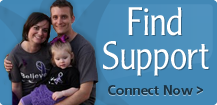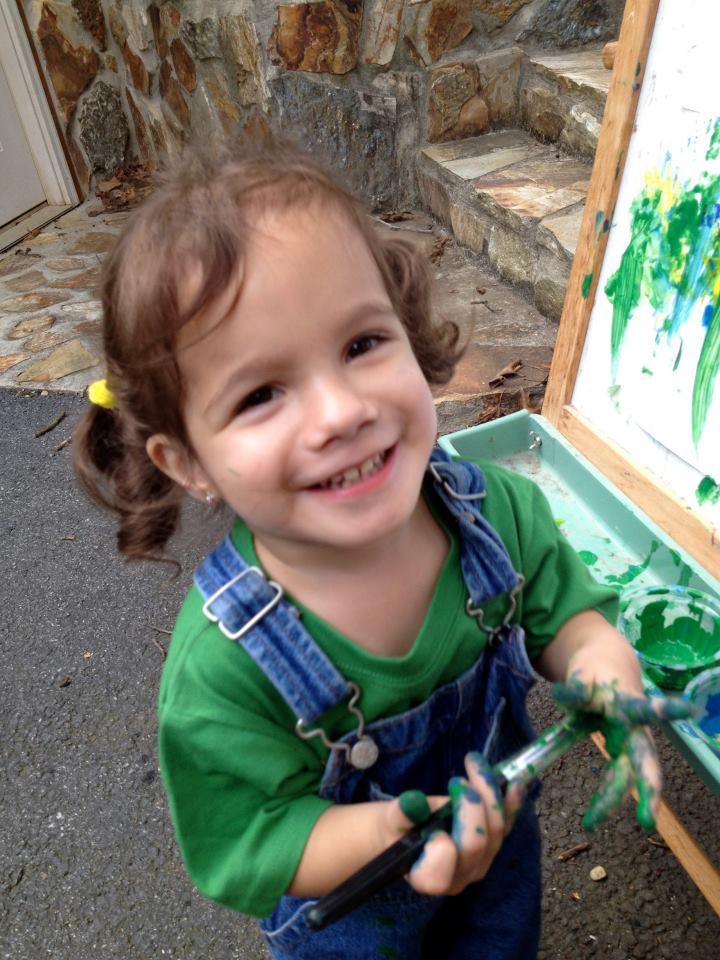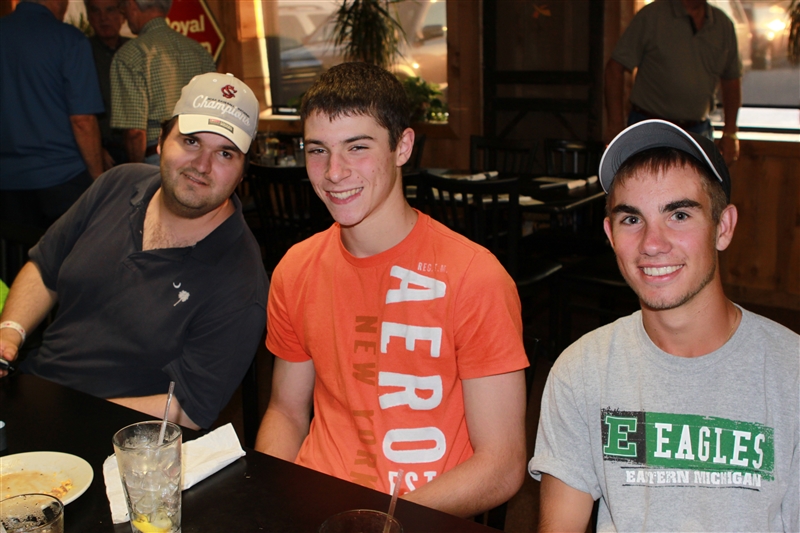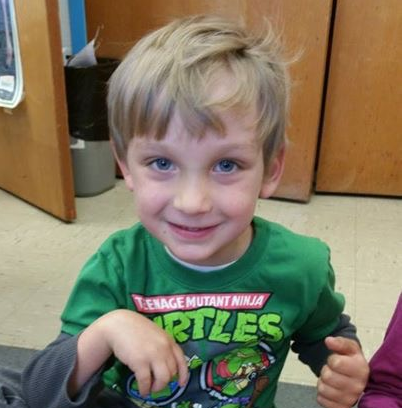What is Hemiplegia?
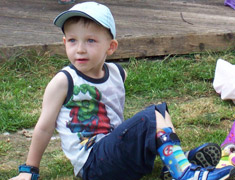 Hemiplegia in infants and children is a type of Cerebral Palsy that results from damage to the part (hemisphere) of the brain that controls muscle movements. This damage may occur before, during or shortly after birth.
Hemiplegia in infants and children is a type of Cerebral Palsy that results from damage to the part (hemisphere) of the brain that controls muscle movements. This damage may occur before, during or shortly after birth.
The term hemiplegia means that the paralysis is on one vertical half of the body. A similar medical term, hemiparesis, means a weakness on one side of the body. In children with hemiplegia, the paralysis in the body occurs on the side opposite the affected part of the brain. For example, if the left side of the child’s brain is injured, then the paralysis will be on the right side of the child’s body.
What are the Symptoms Of Hemiplegia in a Child?
The symptoms of spastic hemiplegic cerebral palsy may differ from child to child and over time. Symptoms may include:
- stiffness and weakness in muscles on one side of the body
- only using one hand during play or favoring one hand before the age of 3 years
- keeping one hand in a fist
- difficulty with walking and balance
- difficulty with fine motor tasks like writing or using scissors
- delay in reaching expected developmental milestones such as rolling over, sitting up, crawling, or smiling
What are some of the Conditions Related to Hemiplegia in a Child?
Hemiplegia is often the result of a brain injury. A wide range of physical, cognitive, and behavioral effects can result from a brain injury. Each child is different and your child may or may not have some of the following effects of the brain injury:
- Memory – Difficulty with encoding, storing, and retrieving new information.
- Attention and Concentration – Problems focusing and sustaining attention for along periods of time. She may be unable to filter out distractions in the classroom or may have problems functioning in situations where there is a great deal of noice or stimluation. The child may have difficult switching from one topic or activity to another.
- Executive Functions – Difficulty setting appropriate goals, planning and organizing behavior to accomplish tasks, and monitoring and evaluating behavior.
- Speech and Language – Depending on the age and cause of injury, the child may have problems with speech, such as lack of speech or extremely slow speech. These may improve with time. Children who have a focal injury(stroke) at or near birth, may have delays in expressive language (talking), but not in receptive language (understanding). These children often begin to catch up with peers by age 3 or so.
- Social Communiation – The ability to participate in conversation with others requires the use of cognitive, linguistic, and social skills, all of which can be affected by an early brain injury. The child may have difficulty following shifting topics, interpretation of social cues, organization of ideas, and application of rules of social behavior.
- Behavior – May experience agitation, irritability, mood swings, hyperactivity, apathy and emotional and behavioral outbursts as a result of the brain injury. The psychosocial problems can be extremely complex.
- Sensory Effects – Difficulty with vision and impaired coordination of both eyes. The brain’s visual processing area may be injured, resulting in visual field cuts (partial losses of vision). Hearing may also be affected.
- Seizures – May develop immediately following the injury or months or even years later. In many cases, the seizures can be controlled through medication.
See the Medical section of the CHASA website for additional information.
Is Hemiplegia a Progressive Condition?
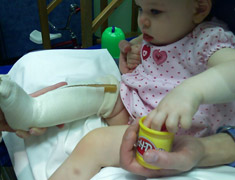 No hemiplegia is not a progressive condition, nor is it a disease. As children experience growth spurts, they may have more problems with muscle spasticity, but this does not mean that the initial injury has gotten worse.
No hemiplegia is not a progressive condition, nor is it a disease. As children experience growth spurts, they may have more problems with muscle spasticity, but this does not mean that the initial injury has gotten worse.
Children with hemiplegia tend to show some atrophy of the hand, arm, shoulder, leg, and foot. This appears more noticeable as the child reaches his or her teens. The child’s arm and leg on the affected side are often shorter than the other side. Some of this may be a true difference in the length of the bone. The limb may also “appear” shorter, but this appearance is not a true length difference and is actually due to the increased muscle tone pulling the limb upwards. Weight bearing and strengthening exercies may help prevent atrophy and increase use.
Children with hemiplegia are at a higher risk of developing scoliosis. It is recommended that your child be followed by an orthopedic surgeon or physiatrist so they can watch for signs of scoliosis and treat if necessary.
Are There Treatments For Children With Hemiplegia?
Children with hemiplegia cannot be “cured”, but therapies can help with some of the symptoms. Medication can be prescribed for seizures. Orthotics, braces, and splints may help with spasticity and gait (walking). See the Treatment section of the CHASA website for more information.
For more detailed information, read Hemiplegia in Children by John Lynch, DO, NINDS
Will my Child with Hemiplegia be in a Special Education Program at School?
Most children with hemiplegia attend traditional schools and are integrated into a traditional classroom. Some children may be pulled out of class or have a special teacher who comes into class to help with challenging subjects. Other children may be in smaller non-integrated classrooms if those better fit their needs. See the School section of the CHASA website for more information.
Causes of Hemiplegia in Children
- Cerebrovascular Accident (CVA) or stroke
- Intraventricular Hemorrhage of the newborn (IVH)
- Thrombosis: embolism or hemorrhage
- Transient ischemic attack (TIA)
- Migraine syndrome
- Head Trauma: brain contusion, subdural hematoma or epidural hematoma
- Sturge-Weber Syndrome
- Todd’s Paralysis
- Brain tumor (Primary or metastatic disease)
- Infection: brain abscess, encephalitis, subdural empyema or meningitis
- Nonketotic hyperosmolar coma
- Vasculitis
- Demyelinating disease: multiple sclerosis, acute necrotizing myelitis
- Hereditary disease: leukodystrophies
- Congenital or perinatal injury
- Arterovenous malformations
- Unilateral Polymicrogyria
- Unilateral Perisylvian Syndrome
- Hemimegalencephaly leading to hemispherectomy
- Hemimegalencephaly with Ohtahara syndrome leading to hemispherectomy
- Unilateral Hydrocephalus
- Cerebral Cavernous Malformations
- Bleed due to Extracorporeal Membrane Oxygenation (ECMO)
- Unilateral Cortical Displasia/Hemimegalencephaly leading to hemispherectomy
- Schizencephaly
Other Resources for Children with Hemiplegia or Hemiparesis
Hemi-Kids Support Group for Parents of Children with Hemiplegia
Hemiplegia/Hemiparesis discussion of gait by Molson Medical Informatics
Congenital Hemiplegia book published 2001; edited by Brian Neville, Robert Goodman
Supporting young adults with hemiplegia: services and costs
Cerebral palsy after perinatal arterial ischemic stroke. March 2008. Indiana
Fingertip force control during bimanual object lifting in hemiplegic cerebral palsy. March 2008, The Netherlands.
Fast adjustments of ongoing movements in hemiparetic cerebral palsy
Early prognostic indicators of outcome in infants with neonatal cerebral infarction: a clinical, electroencephalogram, and magnetic resonance imaging study. Jan. 1999. London. Early MRI and EEG can help to identify the infants with cerebral infarction who are likely to develop hemiplegia.
Hemiparetic cerebral palsy: etiological risk factors and neuroimaging journal article 2001
Visual function in children with hemiplegia in the first years of life 2001
The relationship between infections and adverse pregnancy outcomes: an overview, Dec. 2001
Premotor cortex is involved in restoration of gait in stroke, Aug. 2002
Intact motor imagery in chronic upper limb hemiplegics: evidence for activity-independent action representations, Aug. 2002
Comparing tests of tactile sensibility: aspects relevant to testing children with spastic hemiplegia. Sept. 2002. Sweden.
Neuroimaging fails to identify asymptomatic carriers of familial porencephaly. Belgium. October 2002
Hand function in children with hemiplegic cerebral palsy: prospective follow-up and functional outcome in adolescence. Italy. Feb. 2003



